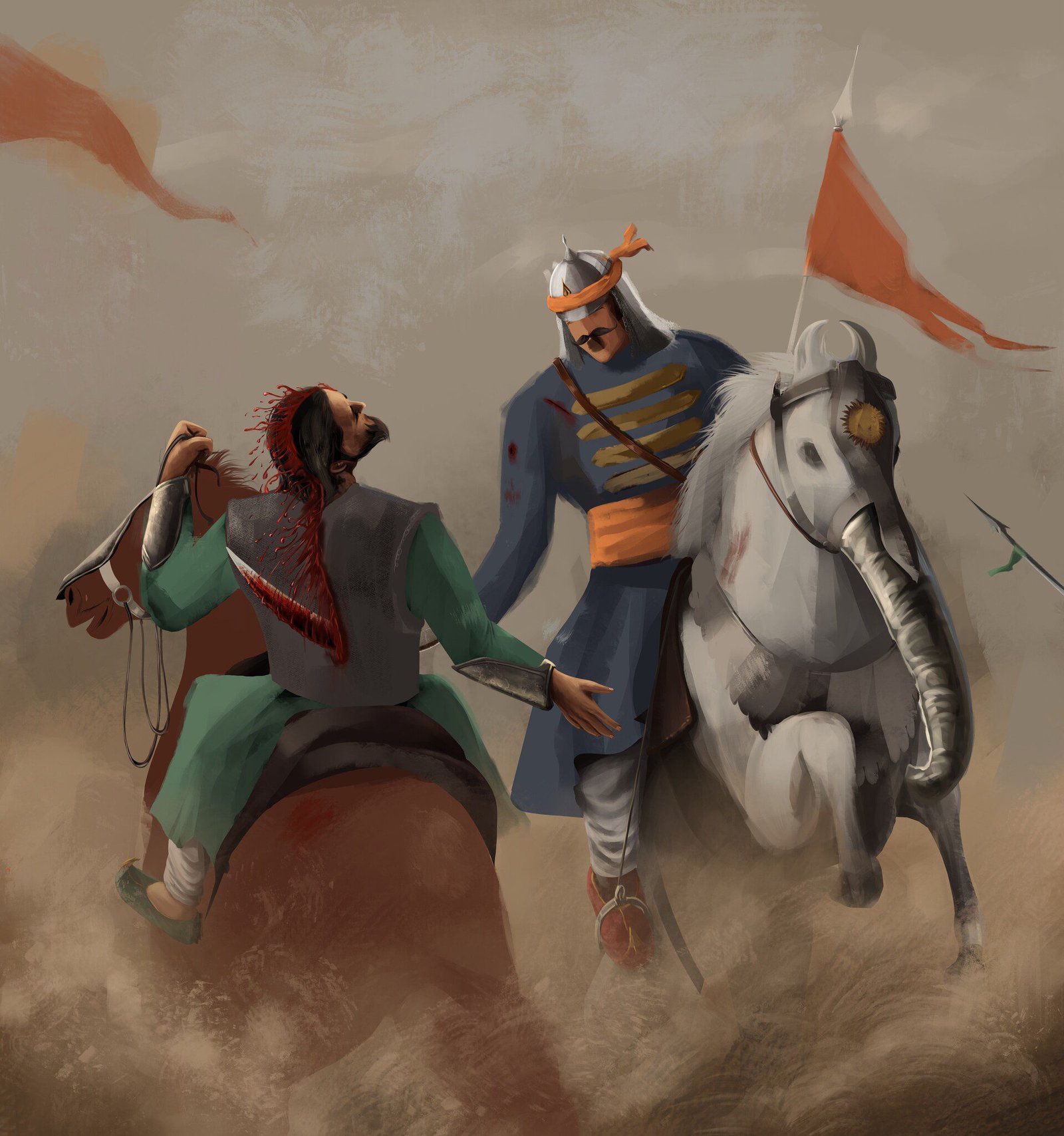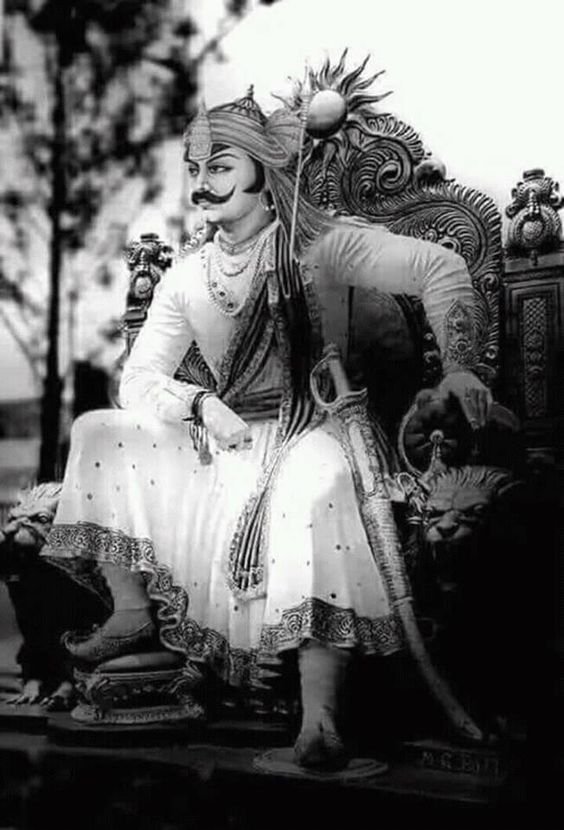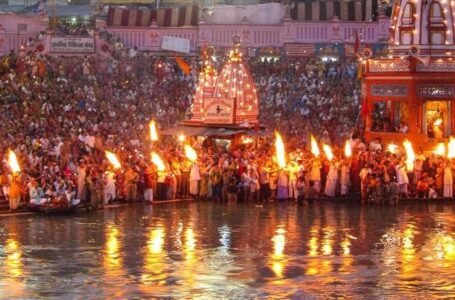Maharana Pratap :The Chetak rider who was never captured by the invaders

The 13th ruler of the Sisodia Dynasty, the Rajput clan that ruled the Mewar (Udaipur), was Maharana Maharana Pratap 1. Born in a royal family to Udai Singh II and Jaiwanta Bai on 9th May 1540, Rana Pratap was designated the Crown Prince as he was the eldest son.
Under the influence of one of his wives Rani Dheer Bai Bhattiyani, Udai Singh II favoured her son Jagmal to take over the throne after him. However, after his death in 1572 the nobles considering the future of the kingdom favoured Maharana Pratap. The nobles who had seen the both from childhood felt that Jagmal was not as qualified as Maharana Pratap so he was their natural choice.

This made his brothers Shakti Singh, Sagar Singh and Kunwar Jagmal Singh to side with the Mughal Emperor Akbar where they were given high positions to help him capture Mewar. He lived at a time when marriage amongst the royals were a part of diplomatic alliances. Maharana Pratap did not deviate from the norm and went on to marry 11 women and had 22 children through them.
Wars
In 1568, Akbar attacked the Chittor region ruled by Uday Singh II. The Mughal Empire during Akbar reign was invincibly strong, so Uday Singh decided to retreat to the foothills of Aravalli Range where he took shelter in Udaipur. However, when Maharana Maharana Pratap decided to stay back and fight, the nobles forced him to retreat, to improve the battle strength and fight.

Humiliated by the siege and the takeover of Mewar, Maharana Pratap became extremely vengeful in contrast to the rulers of those time who either gave in submitting to the supremacy or formed an alliance. Thus, the Mughals in general and Akbar in particular became his arch rival.
When Maharana Pratap was crowned the king by the nobles in 1572, he refused all the envoys sent by Akbar. When Man Singh I (considered as one of the Navratnas’ in Akbar’s court) was sent to formalise a treaty, he was not received well. Maharana Pratap insulted and sent him away for having his territories sold and his aunt married off to Akbar.

Bhagwant Das of Amber, the father of Man Singh I was sent make peace with Maharana Pratap. He agreed to send his son to Akbar’s court but demanded the Chittor fort back and also refused to pay homage to Akbar. These were too much for Akbar to overlook anymore. It was taken as a challenge to his supremacy and he declared a war to force Mewar into submission.
On 18th June 1576, the Battle of Haldighati was led by Man Singh I against Maharana Pratap along the mountain pass of present-day Rajsamand. The Mughals won the battle by decimating the Mewari forces but Maharana Pratap retreated before he could be captured. Mewar, Goganda and Kumbhalgarh (Maharana Pratap’s birthplace) came under the Mughal supremacy and Akbar celebrated the victory by building a new capital at Fatehpur Sikri.
The Haldighati battle is also famous for yet another character, Chetak, the horse that belonged to Maharana Pratap. Known for its swiftness, the kathiawari horse was wounded badly in the battle yet it carried him to safety in Aravalli hills where the Bhil tribes helped with his injury. However, the horse succumbed to the injury but successfully saved its master. Although the horse died, it continues to live as a testimony to its integrity and faithfulness.

Kingdom
The exhausted Maharana vowed to his soldiers that he would only eat food on a leaf, sleep on the floor and not enjoy any luxury until he recaptured Chittor. Although his coffers empty and the Mughals had all the wealth and army, he motivated his soldiers to recover their motherland from the Mughals until the last blood remains in their bodies.
The recouped Maharana started building his forces while Akbar focused on the rebellion in Bengal, Bihar and Punjab. This was the most opportune time for him to strike back as the Mughal’s focus on Mewar was at its least.
In 1582, Maharana Pratap attacked and captured the Mughal outposts at Dewair and Mewar. When this was brought to Akbar’s notice he sent an army contingent to recapture these areas but the Mughal forces were defeated. They did not strike back after that as Akbar was busy with the situation that warranted his attention in the north-west.

Maharana Pratap soon recovered almost all the region he got from his ancestors which included most part of Mewar, western Chittor and Mandalgarh. He also built a new capital at Chavand from where the famous Chavand miniature painting flourished under his patronage. He patronised poets, writers and artisans as well because, during his exile to forest he almost gave up on the war as he feared for the safety of his children in the wilderness but a letter from Prithviraj Rathore of Bikaner who was at Akbar’s court gave him strength and determination to never give up.
After he recaptured Mewar, people started coming back and the good monsoon helped in kick starting the economy through good agriculture yield. He constructed the famous Chamunda mata temple in his capital.
Conclusion
On 29th January 1597, Maharana Maharana Pratap expired from illness following an injury while hunting. His eldest son Amar Singh I succeeded the throne but he was quite inefficient and not as brave. As a result, in 1614 he accepted the supremacy of Jahangir, the son of Akbar. Thus, the dream of Maharana Pratap to fully recover Chittor from the Mughals was not successful. However, he was quite successful in becoming an inspirational figure of Indian history to never submit to the invaders. This made even his arch-rival Akbar to shed tears when he learnt of Maharana Pratap’s passing away, as he considered him as the most relentless warrior he had witnessed.

Maharana Maharana Pratap’s 25 year of war efforts made him the first Indian ruler to fight against the mighty Mughals, which inspires the patriot and fuels the nationalists.


